Effective resource management practices are crucial for building resilient communities. This article explores strategic planning, collaboration, and adaptability in resource allocation. It examines common challenges, methods for measuring effectiveness, and unique practices that enhance sustainability. Engaging community members and prioritizing their needs are essential for long-term success.
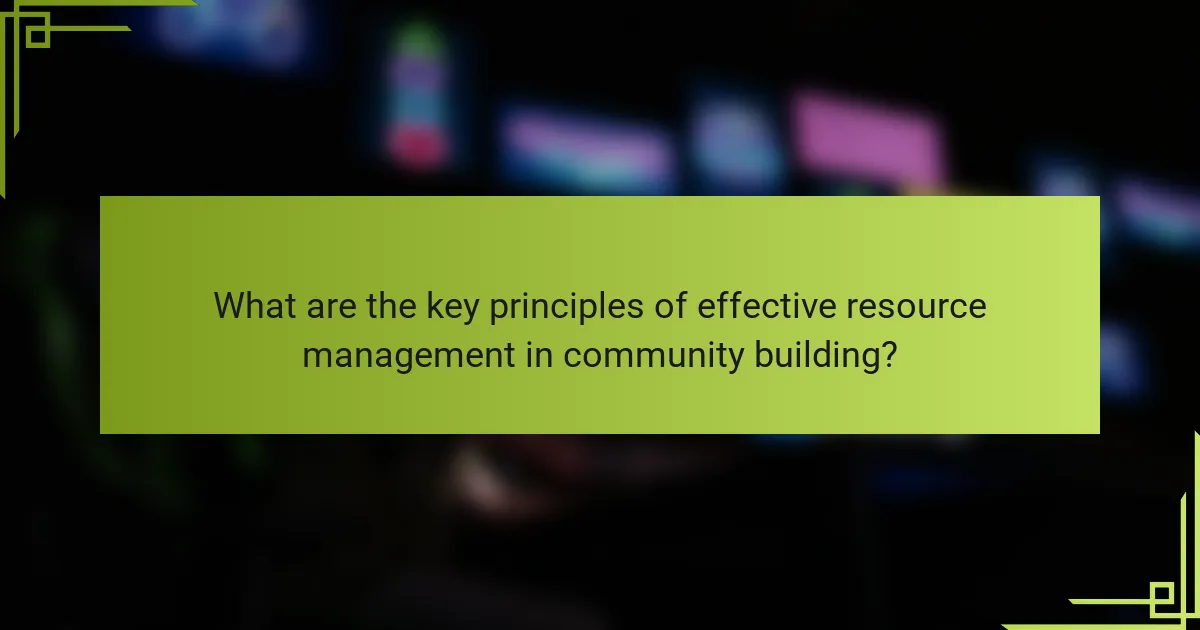
What are the key principles of effective resource management in community building?
Effective resource management in community building hinges on strategic planning, collaboration, and adaptability. Key principles include clear communication, equitable distribution of resources, and ongoing assessment of community needs. These practices foster trust and engagement among members, enhancing overall community resilience. Prioritizing sustainable practices ensures long-term viability, while leveraging local knowledge and skills can uniquely differentiate community initiatives. Regular feedback loops allow for rare insights that can inform future resource allocation and project development.
How can resource allocation impact community engagement?
Resource allocation significantly enhances community engagement by ensuring that resources meet the specific needs of community members. Effective management practices foster participation, build trust, and empower residents.
When resources are allocated effectively, communities experience greater involvement in decision-making processes. For example, investing in local programs can lead to increased volunteerism and collaboration among residents.
Additionally, transparent resource management creates a sense of ownership, motivating community members to actively engage. This can result in higher attendance at events and stronger social networks.
Ultimately, resource allocation impacts community engagement by aligning community goals with available resources, fostering a collaborative environment that benefits all members.
Which strategies enhance collaboration among community members?
Effective strategies to enhance collaboration among community members include fostering open communication, establishing shared goals, and promoting resource sharing. These practices build trust and engagement, leading to stronger community bonds. Encouraging participation in decision-making processes also empowers members, enhancing their commitment to community initiatives. Regular feedback loops ensure continuous improvement and adaptation to members’ needs, increasing overall satisfaction and collaboration effectiveness.
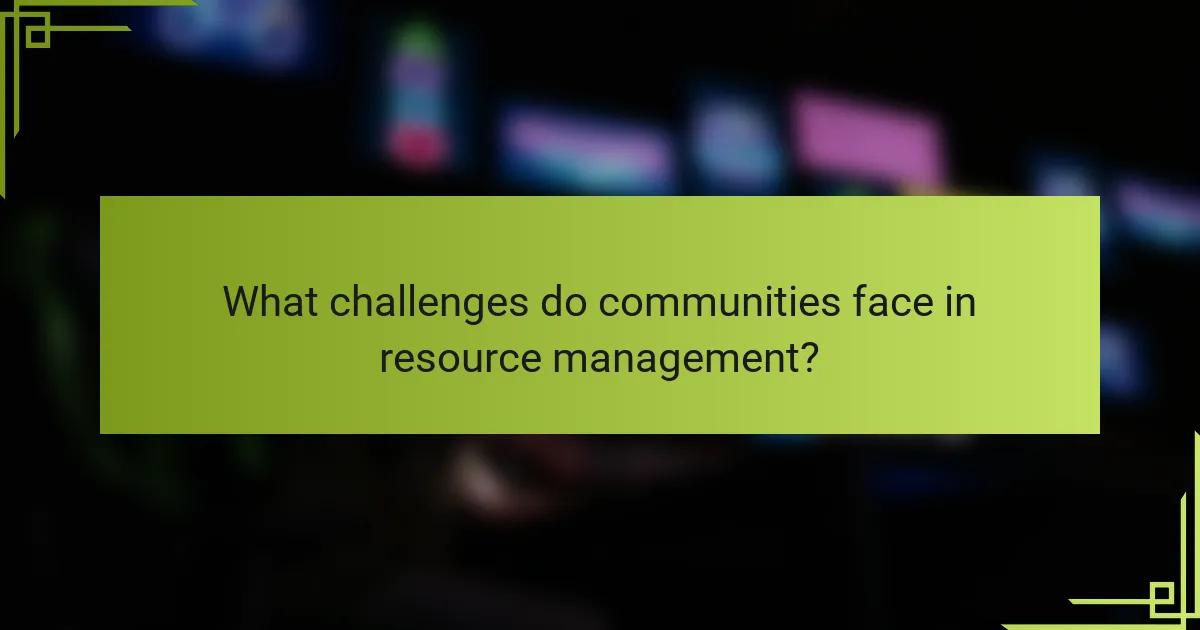
What challenges do communities face in resource management?
Communities face challenges in resource management due to limited funding, lack of expertise, and competing interests. These barriers hinder effective decision-making and sustainable practices. Additionally, inadequate infrastructure and environmental changes complicate resource allocation. Engaging stakeholders can help address these issues and foster collaboration.
How do socio-economic factors influence resource distribution?
Socio-economic factors significantly impact resource distribution within banished communities. These factors dictate access to essential services, funding, and opportunities for collaboration.
Communities with higher socio-economic status often have better resource management practices, leading to more effective distribution. For instance, wealthier communities can invest in infrastructure, education, and health services, enhancing overall resource allocation. Conversely, lower socio-economic communities may struggle with limited resources, affecting their ability to build effective networks.
Effective resource management practices, such as equitable distribution and community engagement, can mitigate these disparities. By prioritizing inclusivity and addressing unique community needs, resource distribution can become more balanced, fostering resilience and sustainability.
In summary, socio-economic factors shape resource distribution profoundly, influencing the capacity of banished communities to thrive and develop through effective management practices.
What role does technology play in overcoming resource management challenges?
Technology plays a crucial role in overcoming resource management challenges by enhancing efficiency and decision-making. It enables better data collection and analysis, which leads to informed resource allocation. Advanced tools like AI and IoT provide real-time insights, optimizing usage and minimizing waste. For example, predictive analytics can forecast resource needs, allowing communities to plan effectively. Additionally, technology facilitates communication and collaboration among stakeholders, fostering a more coordinated approach to resource management. This integration of technology ultimately leads to sustainable practices and improved community resilience.
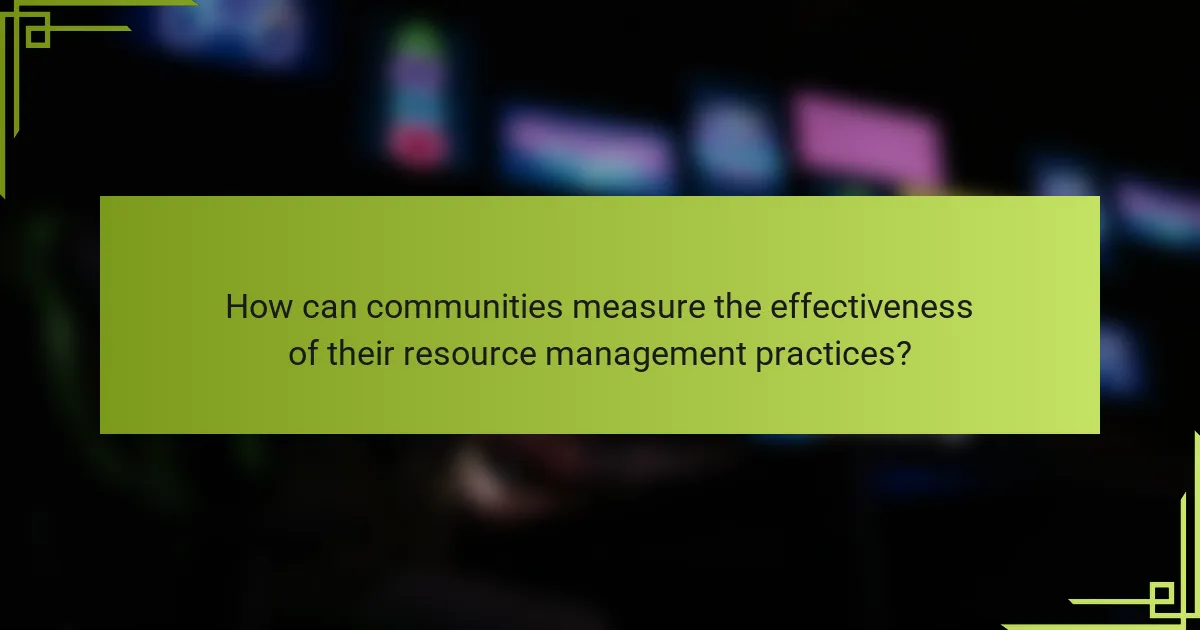
How can communities measure the effectiveness of their resource management practices?
Communities can measure the effectiveness of their resource management practices through quantitative and qualitative assessments. Key metrics include resource utilization rates, community satisfaction surveys, and environmental impact assessments.
Regular data collection enables communities to track changes over time. For instance, comparing resource availability before and after management interventions reveals success levels. Engaging community members in feedback processes enhances accountability and identifies areas for improvement.
Effective practices often lead to increased sustainability and resilience within communities. By analyzing these dimensions, communities can adapt and refine their resource management strategies for better outcomes.
What metrics are essential for assessing resource utilization?
Essential metrics for assessing resource utilization include efficiency rates, allocation ratios, consumption levels, and output metrics. These indicators help evaluate how effectively resources are managed in community-building practices.
| Metric | Description | Value Example |
|————————|———————————————|——————–|
| Efficiency Rate | Measures output relative to resource input | 75% utilization |
| Allocation Ratio | Compares resources allocated to needs | 1:3 ratio |
| Consumption Level | Tracks resource usage over time | 500 units/month |
| Output Metrics | Assesses results achieved from resources | 100 community events |
How can feedback loops improve resource management strategies?
Feedback loops enhance resource management strategies by promoting continuous improvement and adaptation. By systematically collecting and analyzing feedback, communities can identify inefficiencies and optimize resource allocation. This iterative process allows for real-time adjustments, ensuring resources are used effectively. For example, tracking resource usage can reveal patterns that inform better decision-making. Additionally, fostering open communication channels encourages stakeholder engagement, leading to more sustainable practices. These elements collectively strengthen community resilience and enhance overall resource management outcomes.
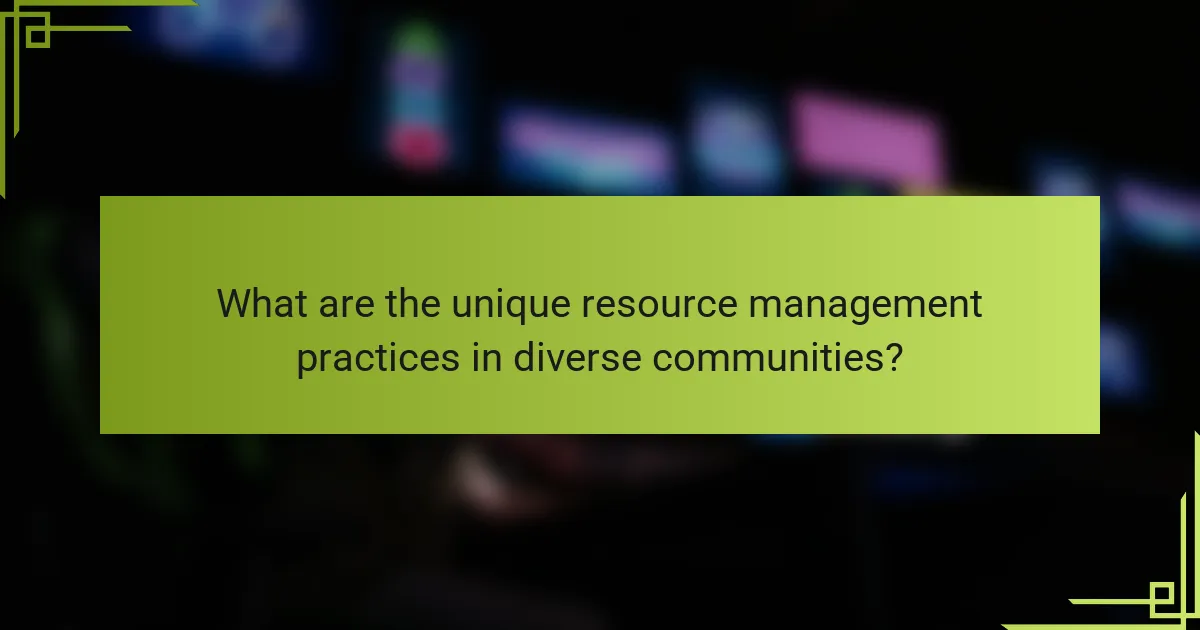
What are the unique resource management practices in diverse communities?
Unique resource management practices in diverse communities focus on collaboration and sustainability. These practices include shared decision-making, local resource utilization, and adaptive strategies to meet community needs.
Communities often implement collective resource management, which fosters social cohesion and builds trust. For instance, community gardens provide food security while enhancing local biodiversity.
Additionally, cultural practices influence resource management, integrating traditional knowledge with modern techniques. This unique blend enhances resilience against environmental challenges.
As a result, diverse communities can maintain their resources effectively, ensuring long-term sustainability and improved quality of life for all members.
How do cultural differences shape resource management approaches?
Cultural differences significantly influence resource management approaches in community building. Diverse cultural values shape priorities, decision-making processes, and resource allocation strategies.
For instance, collectivist cultures often emphasize shared resources and community welfare, leading to collaborative management practices. In contrast, individualistic cultures may prioritize personal ownership and efficiency, resulting in competitive resource management.
Additionally, cultural beliefs regarding sustainability can affect how communities interact with their environment. For example, some cultures may view natural resources as sacred, promoting conservation, while others may focus on economic growth, potentially leading to overexploitation.
Understanding these cultural nuances is essential for developing effective resource management practices that respect local traditions and enhance community resilience.
Which innovative practices have emerged in specific communities?
Innovative practices in banished community building focus on sustainable resource management. Communities are adopting collaborative strategies to optimize shared resources, enhancing resilience and social cohesion.
For example, urban gardens in marginalized neighborhoods promote food security while fostering community ties. These practices demonstrate effective use of local resources, creating self-sustaining environments that empower residents.
Additionally, resource-sharing initiatives, such as tool libraries, reduce waste and encourage community engagement. These innovative approaches not only address immediate needs but also cultivate long-term relationships among community members.
As a result, these practices exemplify how effective resource management can transform banished communities into thriving, interconnected networks.
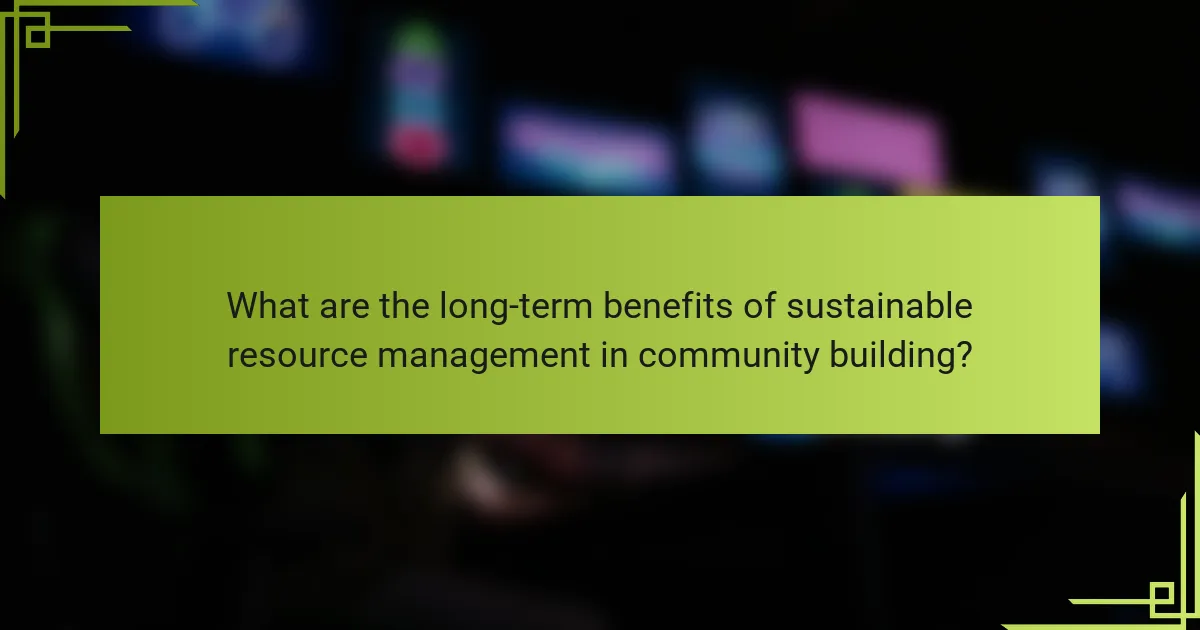
What are the long-term benefits of sustainable resource management in community building?
Sustainable resource management in community building leads to enhanced resilience, economic stability, and social cohesion. Long-term benefits include reduced environmental impact, improved quality of life, and increased community engagement. Effective practices foster a sense of ownership among residents, encouraging collaborative efforts for sustainability. As a result, communities can adapt to changes and challenges more effectively, ensuring lasting development and prosperity.
How does effective resource management contribute to community resilience?
Effective resource management enhances community resilience by optimizing resource allocation, fostering collaboration, and promoting sustainable practices. Efficient use of resources leads to stronger local economies and improved social cohesion. For example, communities that manage resources effectively can respond better to crises, ensuring essential services remain operational. Additionally, effective resource management encourages innovation, enabling communities to adapt to changing conditions and recover from disruptions more swiftly.
What impact does sustainability have on community growth?
Sustainability significantly enhances community growth by fostering resource efficiency and resilience. Effective resource management practices create a stable environment, encouraging local economies to thrive. Sustainable initiatives promote social cohesion, leading to increased participation in community activities. This collective effort often results in improved public spaces and infrastructure, enhancing overall quality of life. Additionally, sustainable practices can attract eco-conscious businesses, further driving economic development and community engagement.
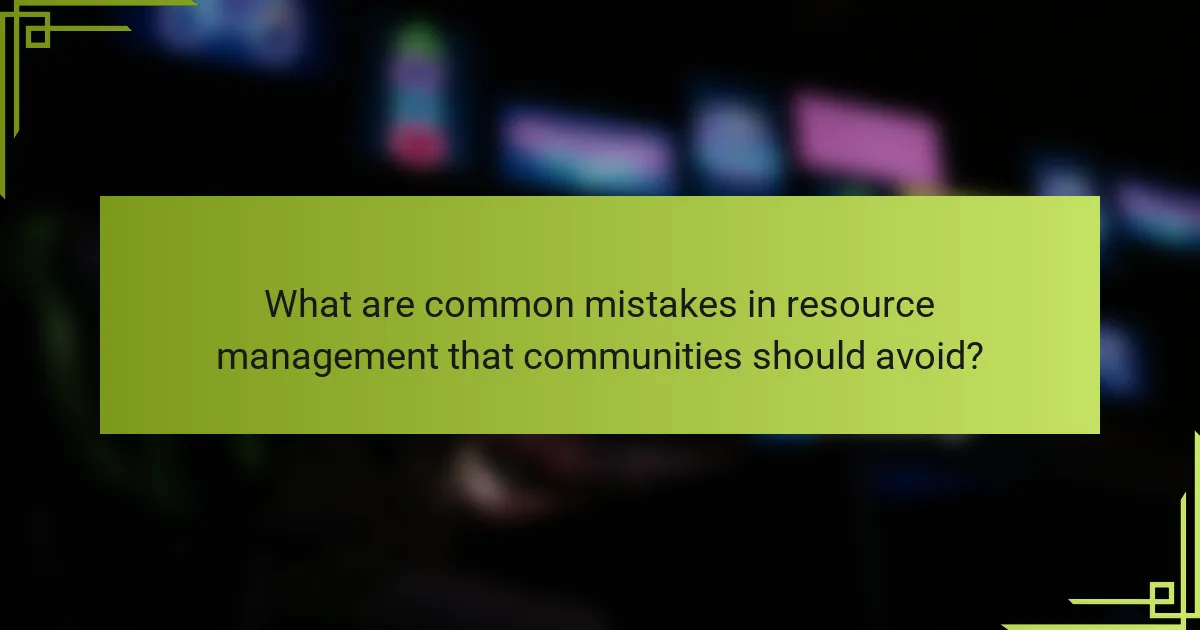
What are common mistakes in resource management that communities should avoid?
Communities should avoid common mistakes in resource management to ensure effective building. Key errors include neglecting community input, failing to prioritize resources, misallocating funds, and overlooking sustainability. Engaging community members fosters ownership and better decision-making. Prioritizing resources based on needs enhances efficiency. Proper fund allocation prevents waste and maximizes impact. Focusing on sustainable practices ensures long-term viability.
How can communities ensure transparency in resource allocation?
Communities can ensure transparency in resource allocation by implementing clear communication channels and participatory budgeting processes. Engaging community members fosters trust and accountability. Regularly sharing financial reports and resource distribution data enhances visibility. Utilizing technology, such as online platforms for tracking allocations, can further promote transparency and community involvement.
What strategies can prevent resource mismanagement?
Effective resource management practices prevent mismanagement by promoting transparency, collaboration, and accountability. Implementing clear communication channels ensures all community members understand resource allocation. Regular audits of resource use identify inefficiencies and areas for improvement. Training sessions on resource management enhance skill sets and foster a culture of responsible usage. Establishing metrics for success allows communities to measure progress and adjust strategies accordingly.
What best practices can enhance resource management in community building?
Effective resource management practices enhance community building by fostering collaboration, optimizing resource allocation, and ensuring sustainability. Prioritizing communication strengthens relationships among members. Implementing transparent processes builds trust and accountability. Utilizing technology streamlines operations and improves accessibility. Regular assessments of resource use identify areas for improvement.